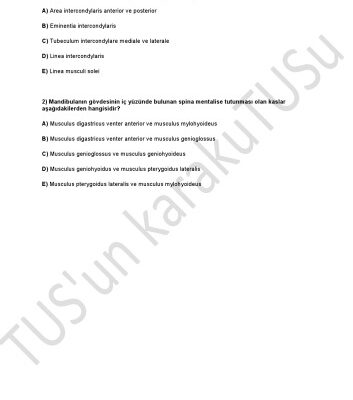

خرید و دانلود نسخه کامل کتاب Intersectionality and Discrimination by Roger White – Original PDF
64,500 تومان قیمت اصلی 64,500 تومان بود.37,500 تومانقیمت فعلی 37,500 تومان است.
تعداد فروش: 73
Author:
Roger White
4 R. WHITE In recent years, issues related to the broader topic of social justice have become increasingly prominent in the public discourse of the United States. In simple terms, social justice is focused on the extent to which fairness is exhibited in society. It emphasizes equal opportunities across individuals as well as equal economic, political, and social rights. Social justice is closely related to and is often said to encompass economic justice, which can be described as the creation of opportunities that allow individuals to establish the material foundations that are necessary for the support of creative, dignified, and productive lives. Greater economic justice requires equity in labor market processes and outcomes. This, in turn, requires fairness in employment and wage setting so that an indi- vidual can have a job that pays a living wage, have access to a quality education and affordable childcare, and be able to afford a roof over their head and food for their family. In the U.S. labor market, economic injustice often involves discrimina- tion that is based on personal characteristics such as age, ethnicity, race, sex, etc. Unfortunately, such inequities are often significant in magni- tude and persistent over time. Two examples illustrate this point. First, regarding employment, during the past several decades, the unemploy- ment rate for black Americans has typically been about twice the level of the white unemployment rate. Specifically, during the past half-century, the average monthly black unemployment rate has been 11.6% while the white unemployment rate has averaged only 5.5% (BLS 2022).1 Second, in 1980, the median hourly wage of female workers in the United States was only 64% of the median wage paid to their male counterparts (Barroso and Brown 2021). Although this wage gap narrowed to 84% in 2020 (ACS 2022a), a 16% difference in median hourly wage rates across sexes is quite sizeable. In both cases, some portion of the disparity between the worker groups and their counterparts, who are white and male, respec- tively, may be the result of differences in productive characteristics such as education, skills, and experience. Of course, it is also possible that some, and potentially all, of the unadjusted wage gap is attributable to discrimination. 1 Monthly unemployment rates by race are available from the U.S. Bureau of Labor Statistics (BLS). Our calculations are made using seasonally adjusted monthly unemploy- ment rate series for the period from January 1972 through October 2022. Appendix Fig. 1.5 illustrates the striking persistence of differences between the two series. 1 A RATIONALE FOR THE STUDY OF INTERSECTIONAL WAGE … 5 A different type of example is found in the opening passage of Cain’s (1986) survey of the literature on labor market discrimination. The paper begins as follows: This survey of the economics of labor market discrimination is motivated by two fundamental problems associated with income and wage differences among groups classified by sex, race, ethnicity, and other characteristics. The first is the inequity of long-lasting differences in economic well-being among the groups; in particular, differences in household or family income. The second is the inequity of long-lasting differences in the average wage rates among groups of workers classified by these demographic traits, when the groups may be presumed to be either equally productive or to have equal productive capacity. (p. 693) It is startling just how well these words describe present conditions in the U.S. labor market. If a reader was unaware that Cain’s survey was published thirty-five years ago, they could easily be forgiven for thinking the words are from a recent work. That this decades-old depic- tion of economic injustices remains applicable today further illustrates the persistence of inequities in the U.S. labor market. In this work, we examine multiple topics that are related to wage discrimination.2 We study the period from 2008 through 2020 using annual data from the American Community Survey (ACS) (2022a). We estimate wage discrimination rates for each year in our reference period for each of 43 worker groups that are defined by workers’ non-productive personal characteristics (i.e., Hispanic ethnicity, nativity, 2 While there are many other forms of labor market discrimination, our analysis is purposely limited to wage discrimination. We do not examine hiring discrimination or terminations that result from disparate treatment. We also do not examine customer discrimination (i.e., discrimination that occurs when employers internalize their customers’ prejudices against workers with certain personal characteristics and, thus, demonstrate bias/prejudice against those same workers to increase profits). However, given that our focus is on wage discrimination, our data set includes employed individuals which permits us to potentially capture wage discrimination that is related to job promotions, employee discrimination, and (if wage-related) job assignments. 6 R. WHITE race,3 and sex).4 ,5 We also consider whether variation in our estimated discrimination rates follows a pattern that suggests wage discrimination is intersectional. To formally examine whether wage discrimination is intersectional, we construct expected discrimination rates for each of the worker groups that differ from our null cohort of native-born, non-Hispanic, white, male workers in two or more personal character- istics. The expected discrimination rates are compared to our estimated discrimination rates to determine whether wage discrimination is addi- tive or non-additive (i.e., intersectional). Lastly, for each worker group, we explore possible pre-labor market wage discrimination with respect to the returns to education and whether there is overlap in affected worker groups across pre-market discrimination and intersectional wage discrimination. 1.1 Illustrating Unadjusted Wage Gaps A brief review of unadjusted wage gaps between several worker groups during the past four-plus decades offers additional motivation for our analysis.6 Figures 1.1 and 1.2 illustrate unadjusted wage gaps. In both figures, the average wage rates are presented relative to corresponding null worker cohorts. For example, female workers’ average hourly wages 3 Using the ACS variable RAC1, we construct six race classifications. The RAC1 variable includes nine race classifications. We merge the “American Indian alone,” “Alaska native alone,” and “American Indian and Alaska native tribes specified; or American Indian or Alaska native, not specified and no other races” to form a single American Indian and Alaska native classification. Likewise, we merge the “Asian alone” and the “Native Hawaiian and Other Pacific Islander alone” classifications to form a single Asian or Pacific Islander classification. Our other race classifications are “White alone,” “Black or African American alone,” “Some other race alone,” and “Two or more major race groups,” which we refer to as white, black, other race, and multiple races, respectively. 4 Since this work examines survey data, all individual characteristics are self-identified (e.g., individuals’ Hispanic ethnicity, nativity, and race classifications and their self-reported binary interpretation of sex). 5 Throughout this work, we refer to sex-based discrimination rather than gender-based discrimination. The Census Bureau (2022a) explains that, in the ACS questionnaire, “the sex question wording very specifically intends to capture a person’s biological sex and not gender.” Since gender is how a person identifies and the ACS does not solicit information on gender identity, we believe that, in this work, “s



نقد و بررسیها
هنوز بررسیای ثبت نشده است.